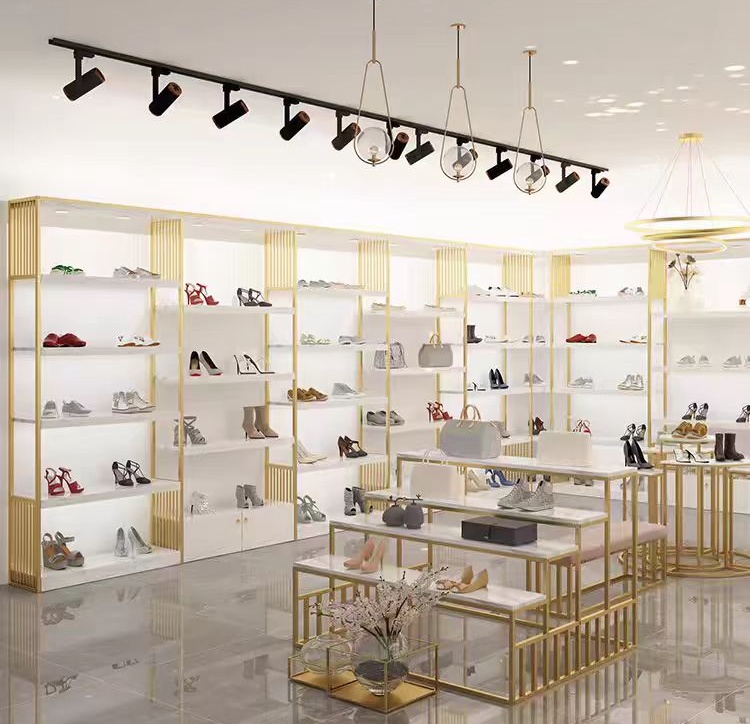What trends should we consider in shop fitting design?
𝐖𝐡𝐞𝐧 𝐲𝐨𝐮 𝐰𝐚𝐧𝐭 𝐭𝐨 𝐨𝐩𝐞𝐧 𝐲𝐨𝐮𝐫 𝐨𝐰𝐧 𝐬𝐭𝐨𝐫𝐞 𝐨𝐫 𝐫𝐞𝐧𝐨𝐯𝐚𝐭𝐞 𝐚 𝐬𝐭𝐨𝐫𝐞, 𝐝𝐨 𝐲𝐨𝐮 𝐤𝐧𝐨𝐰 𝐭𝐡𝐞 𝐭𝐫𝐞𝐧𝐝𝐬 𝐚𝐧𝐝 𝐟𝐚𝐜𝐭𝐨𝐫𝐬 𝐭𝐡𝐚𝐭 𝐧𝐞𝐞𝐝 𝐭𝐨 𝐛𝐞 𝐜𝐨𝐧𝐬𝐢𝐝𝐞𝐫𝐞𝐝 𝐢𝐧 𝐬𝐡𝐨𝐩 𝐟𝐢𝐭𝐭𝐢𝐧𝐠 ❓
9/6/20243 min read


When it comes to shop fitting design, staying updated on the latest trends is crucial for creating an engaging and effective retail environment. Here are some key trends to consider:
1. Sustainability: Consumers are increasingly aware of environmental issues, so incorporating sustainable materials and practices into store design can attract eco-conscious customers.
Eco-Friendly Materials: Use sustainable materials such as reclaimed wood, recycled metals, and low-VOC paints.
Energy Efficiency: Incorporate LED lighting and energy-efficient systems to reduce operational costs and environmental impact.
2. Technology Integration: Incorporating digital displays, interactive kiosks and other technologies into store decoration design can enhance the customer experience and create a more engaging retail environment.
Smart Retail Solutions: Implement digital signage, interactive displays, and mobile payment options to enhance the shopping experience.
Augmented Reality (AR): Use AR applications to allow customers to visualize products in their own space or try on items virtually.
3. Flexible and Modular Design: With the rise of pop-up stores and temporary retail spaces, flexible store decoration designs that can be easily reconfigured and adapted to different layouts and products are becoming increasingly popular.
Adaptable Fixtures: Choose modular shelving and displays that can be easily reconfigured to accommodate changing inventory or seasonal promotions.
Multi-Functional Spaces: Create areas that can serve multiple purposes, such as event spaces or pop-up shops.
4. Biophilic Design: ims to imitate the form, structure and function of nature to create more viable and sustainable products and environments. This design approach emphasizes integration with nature to create healthier and more comfortable spaces and products.
Natural Elements: Incorporate plants, natural light, and organic materials to create a calming atmosphere that connects customers to nature.
Indoor Gardens: Use vertical gardens or living walls as striking design features that also improve air quality.
5. Minimalism: minimalism often involves the use of clean lines, a limited color palette, and uncluttered spaces to create a feeling of calm and order.
Simple Aesthetics: Focus on clean lines and uncluttered spaces to highlight products and create a serene shopping environment.
Neutral Color Palettes: Use soft, neutral colors to create a welcoming atmosphere and allow products to stand out.
6. Experiential Retail: Consumers are attracted to authentic and unique experiences, so store design that tells a story or reflects a brand’s values and heritage can create a more compelling retail environment.
Engaging Experiences: Design spaces that encourage interaction, such as product testing areas, workshops, or immersive environments that tell a story.
Community Spaces: Create areas for events or gatherings that foster a sense of community and enhance customer loyalty.
7. Omnichannel Integration: As omni-channel retail grows in importance, store design that seamlessly integrates online and offline experiences (such as click-and-collect areas and interactive digital displays) can help create a cohesive customer journey .
Seamless Experience: Ensure that online and offline experiences are integrated, allowing customers to browse online and pick up in-store, or vice versa.
Click and Collect Areas: Designate specific areas for customers to easily collect online orders.
8. Personalization
Tailored Experiences: Use customer data to create personalized shopping experiences, such as curated product displays based on preferences.
Customizable Spaces: Allow for personalization in the shopping environment, such as customizable lighting or interactive product displays.
9. Local and Artisanal Focus
Support Local Artisans: Highlight local products and artisans in your store design to create a unique shopping experience that resonates with community values.
Cultural Influences: Incorporate design elements that reflect the local culture and heritage.
10. Health and Safety Considerations
Spacious Layouts: Design wider aisles and open spaces to accommodate social distancing and ensure a comfortable shopping experience.
Hygienic Design: Use materials that are easy to clean and maintain, and incorporate touchless technology wherever possible.
Conclusion
Incorporating these trends into your shop fitting design can create an inviting and modern retail space that resonates with today’s consumers. By focusing on sustainability, technology, and customer experience, you can enhance your store's appeal and drive sales while building lasting customer relationships. Keep experimenting and adapting to stay ahead in the dynamic world of retail.
